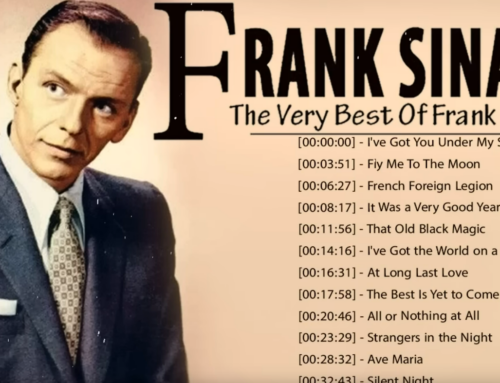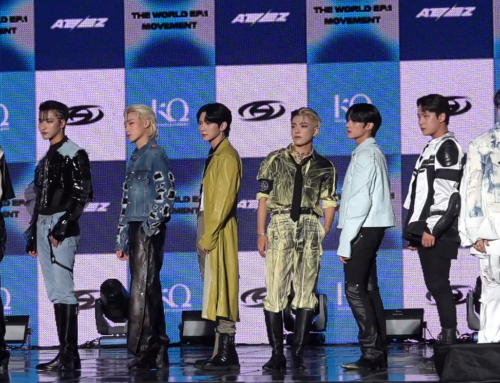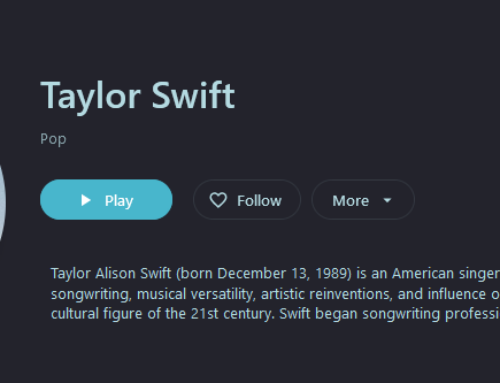The Influence of Philip Glass on Minimalist Music: A Look at His Pioneering Works
The minimalist movement in music has been gaining popularity in recent years, with artists from various genres incorporating its principles into their work. But where did this movement originate from? Who were the pioneers that paved the way for this unique style of music? One name that stands out is Philip Glass, a composer who has been hailed as one of the most influential figures in minimalist music.
Glass was born in Baltimore, Maryland in 1937 and began his musical journey at a young age. He studied at the University of Chicago and the Juilliard School, where he was exposed to the works of renowned composers such as Arnold Schoenberg and Nadia Boulanger. However, it was his encounter with Indian classical music and the teachings of Ravi Shankar that sparked his interest in minimalism.
Minimalism, as a musical genre, is characterized by its repetitive and simplistic structures. It focuses on the use of a limited number of musical elements, such as short melodic patterns and steady rhythms, to create a hypnotic and meditative effect. Glass was drawn to this style of music, which he believed had the power to transcend traditional musical boundaries and connect with the listener on a deeper level.
In the 1960s, Glass began experimenting with minimalism, and his early works, such as “Music in Similar Motion” and “Two Pages,” showcased his unique approach to composition. These pieces were composed of short musical phrases that were repeated and gradually shifted in pitch and rhythm, creating a mesmerizing effect. Glass’s use of repetitive structures was a departure from the traditional Western classical music, which focused on complex harmonies and melodies.
However, it was Glass’s opera, “Einstein on the Beach,” that truly solidified his place as a pioneer of minimalist music. This groundbreaking work, composed in collaboration with Robert Wilson, premiered in 1976 and was a four-and-a-half-hour-long performance without intermission. The opera featured repetitive musical patterns, spoken texts, and non-linear storytelling, challenging the traditional opera format. It was a bold and daring move that garnered both praise and criticism, but it undeniably left a lasting impact on the music world.
Glass’s influence on minimalist music can also be seen in his film scores, most notably in his collaborations with director Godfrey Reggio. The Qatsi trilogy, consisting of “Koyaanisqatsi,” “Powaqqatsi,” and “Naqoyqatsi,” featured Glass’s signature repetitive structures, creating a perfect harmony with the stunning visuals of the films. These scores brought minimalist music to a wider audience and solidified Glass’s position as a leading figure in the genre.
Today, Glass’s influence can be seen in the works of modern electronic artists, such as Brian Eno and Aphex Twin. These artists have taken the principles of minimalism and incorporated them into their electronic compositions, creating a fusion of traditional and modern music. Glass’s impact on the music world is undeniable, and his pioneering works continue to inspire and influence artists across genres.
In conclusion, Philip Glass’s contributions to the minimalist movement in music cannot be overstated. His bold and innovative approach to composition has paved the way for a new style of music that continues to evolve and inspire. Glass’s works have stood the test of time and continue to be celebrated and studied by musicians and music lovers alike. As we continue to see the influence of minimalism in modern music, we must not forget the pioneering works of Philip Glass and the impact he has had on the music world.
Exploring the Evolution of Minimalism in Electronic Music: From Steve Reich to Current Artists
The minimalist movement in music has been around for decades, but it has recently gained a resurgence in popularity, especially in the electronic music scene. From the early works of Philip Glass and Steve Reich to the current artists pushing the boundaries of minimalism, this genre has evolved and transformed in ways that continue to inspire and captivate listeners.
Minimalism in music is characterized by its simplicity and repetition, often using a limited number of musical elements to create a hypnotic and meditative effect. It emerged in the 1960s as a reaction to the complexity and grandeur of traditional classical music, with composers like Glass and Reich leading the way.
Philip Glass, known for his minimalist operas and film scores, was one of the pioneers of this movement. His compositions, such as “Einstein on the Beach” and “Koyaanisqatsi,” were groundbreaking in their use of repetitive patterns and structures. Glass’s music was a departure from the traditional rules of classical music, and it opened the door for other composers to experiment with minimalism.
Another influential figure in the minimalist movement is Steve Reich. His compositions, such as “Music for 18 Musicians” and “Drumming,” were based on the concept of phasing, where two or more identical musical patterns are played at different tempos, creating a shifting and evolving sound. Reich’s work was a departure from the traditional Western music structure, and it paved the way for the development of minimalism in electronic music.
As technology advanced, so did the possibilities for creating minimalist music. In the 1980s, electronic music began to incorporate elements of minimalism, with artists like Brian Eno and Kraftwerk using repetitive patterns and electronic sounds to create a hypnotic and otherworldly atmosphere. This fusion of minimalism and electronic music laid the foundation for the emergence of a new wave of artists in the 1990s and 2000s.
One of the most influential electronic artists of this era is Aphex Twin. His album “Selected Ambient Works 85-92” is a prime example of minimalism in electronic music, with its use of repetitive beats and ambient sounds. Aphex Twin’s music has been described as “meditative” and “hypnotic,” and it continues to inspire and influence artists in the electronic music scene.
Another notable artist in the minimalist electronic music scene is Tim Hecker. His compositions, such as “Ravedeath, 1972” and “Virgins,” are a fusion of ambient and noise music, creating a unique and immersive listening experience. Hecker’s work is a testament to the evolution of minimalism in electronic music, pushing the boundaries and exploring new territories.
In recent years, minimalism in electronic music has continued to evolve and expand, with artists like Jon Hopkins, Nils Frahm, and Kiasmos gaining recognition for their innovative and mesmerizing compositions. These artists have taken the concept of minimalism to new heights, incorporating elements of techno, house, and other electronic genres to create a dynamic and captivating sound.
The minimalist movement in music has come a long way since its inception, and it continues to inspire and influence artists across different genres. From the early works of Philip Glass and Steve Reich to the current electronic artists pushing the boundaries of minimalism, this genre has evolved and transformed in ways that continue to captivate and inspire listeners.
In a world where music is becoming increasingly complex and overwhelming, minimalism offers a refreshing and meditative escape. It allows us to slow down, focus on the present moment, and appreciate the beauty in simplicity. So, the next time you need a break from the chaos of everyday life, put on some minimalist music and let yourself get lost in its hypnotic rhythms and melodies. You might just discover a new favorite artist or a new way of experiencing music.
Minimalism and Sustainability: How Minimalist Music Reflects the Movement’s Values and Ideals
The minimalist movement has been gaining traction in various aspects of our lives, from fashion to home decor. But did you know that it has also made its mark in the world of music? Minimalist music, characterized by its repetitive and simple structures, has been around since the 1960s and has continued to evolve and influence modern electronic artists. But beyond its musical style, minimalist music also reflects the values and ideals of the minimalist movement, particularly in terms of sustainability.
One of the pioneers of minimalist music is American composer Philip Glass. His works, such as “Einstein on the Beach” and “Koyaanisqatsi,” are known for their repetitive patterns and lack of traditional musical structures. Glass himself has been known to live a minimalist lifestyle, with a small apartment and a simple wardrobe. He once said, “I don’t need much to live on. I’m a minimalist by nature.”
This sentiment is reflected in his music, where he strips away unnecessary elements and focuses on the essential. This approach to music-making aligns with the minimalist movement’s emphasis on living with less and being content with what we have. In a world where consumerism and excess are rampant, minimalist music serves as a reminder to appreciate the beauty in simplicity.
But beyond its philosophical connection to the minimalist movement, minimalist music also reflects its values of sustainability. In an industry where elaborate stage productions and excessive use of resources are the norm, minimalist music stands out for its simplicity and efficiency. Minimalist composers and artists often use a limited number of instruments and equipment, reducing their carbon footprint and promoting sustainability.
Moreover, minimalist music also challenges the traditional notion of what makes a piece of music “good.” In a society where bigger and louder are often equated with better, minimalist music proves that less can be more. By using minimal resources and focusing on the essence of the music, minimalist artists create impactful and meaningful pieces without contributing to the excessive consumption of resources.
This concept is also evident in the rise of modern electronic artists who have been heavily influenced by minimalist music. Artists like Aphex Twin, Brian Eno, and Steve Reich have incorporated minimalist elements into their electronic music, creating a unique blend of old and new. These artists have also been known to use sustainable practices in their music production, such as using recycled materials for their album covers and promoting eco-friendly touring practices.
But minimalist music’s connection to sustainability goes beyond its production and performance. It also extends to the listening experience. Minimalist music often requires the listener to be fully present and engaged, as the subtle changes and repetitions in the music can be easily missed if one is not paying attention. This encourages a mindful and intentional approach to music consumption, which aligns with the minimalist movement’s values of being mindful of our actions and their impact on the environment.
In a world where we are constantly bombarded with stimuli and distractions, minimalist music offers a much-needed respite. Its simplicity and repetitive nature can be meditative and calming, allowing us to disconnect from the chaos of everyday life and reconnect with ourselves. This is especially relevant in today’s fast-paced society, where the need for instant gratification and constant stimulation has become the norm.
In conclusion, minimalist music not only offers a unique and refreshing musical experience but also reflects the values and ideals of the minimalist movement. Its focus on simplicity, efficiency, and sustainability serves as a reminder to live with intention and appreciate the beauty in the essentials. So the next time you listen to a minimalist piece, take a moment to reflect on its deeper meaning and how it aligns with the minimalist movement’s values. Who knows, it may inspire you to adopt a more minimalist lifestyle in other aspects of your life as well.



